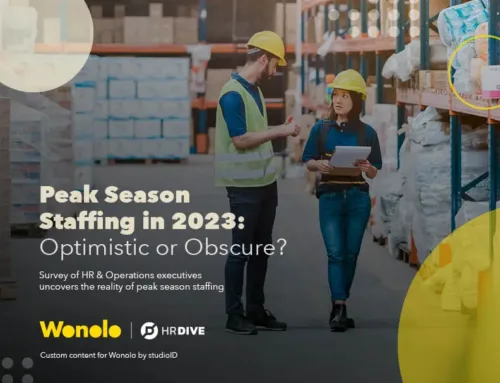Wonolo
This is no April Fools’ joke. The start of April marks an important shift in the history of United States labor laws as minimum wage legislation in New York and California increased to $15 an hour – now the highest in the country – signifying a movement that will “sweep our country.” Despite the stances of many conservative legislators and historical opposition, change is here.
Sweeping nationwide reform will undoubtedly be slower than advocates of the shift desire, but as the Presidential hopeful and former Secretary of State Hillary Clinton predicted on April 4, “It’s a result of what is best about New York and what is best about America. And I know that it’s going to sweep our country.” Enthusiastic cheers of “Yes, we did!” echoed throughout California and New York as the combined legislation launched nearly 60 million Americans into the $15 minimum wage economy.
 (Photo credit: The Economist, “Political Power Follows Economic Power”)
(Photo credit: The Economist, “Political Power Follows Economic Power”)
Big boats turn slowly, and as labor laws impact the national economy, it shouldn’t come as a surprise that the change to $15 an hour will not be immediate. In California, the minimum wage will increase progressively from now until 2022. Next year, the minimum wage jumps from $10 to $10.50, and then to $11.00 in 2018, with $1.00 per year increases to follow each year thereafter.
“This is the work of many hands, and many minds and many hearts,” said California Governor Jerry Brown in the midst of a crowd of electric lawmakers. “This is about economic justice, it’s about people, it’s about creating a little, tiny balance in a system that every day becomes more unbalanced.”
 (Photo credits – left to right: Al Seib, Los Angeles Times; Jason Szenes, European Pressphoto Agency)
(Photo credits – left to right: Al Seib, Los Angeles Times; Jason Szenes, European Pressphoto Agency)
California’s legislation, signed by a triumphant Jerry Brown, actually came in second to New York’s, as California’s legislation was signed into law just a few hours after New York’s. A few hours prior, New York’s more complex version of the law was hailed as the “first in the nation” by Governor Andrew Cuomo. In New York, the law sets up three different wage increase rollouts. New York City employers will have to reach $15 an hour for all workers prior to January 2019. Long Island and Westchester County will experience a more gradual increase, peaking at $15 an hour at the start of 2022. The rest of New York state will progress to a $15 an hour peak on a “to be determined” schedule.
To be fair to Governor Brown’s and Governor Cuomo’s historic announcements that were 2,434 miles and a few hours apart, by 2022, California will technically be first to reach $15 an hour for the statewide rollout, but New York gets dibs on the milestone for now. Both legislations pay homage to Seattle’s city-wide hike to a $15 minimum wage, which in May 2014 set the stage for phased minimum wage rollouts that aim to protect small businesses from negative impacts from reform.
Anticipating the increase in the minimum wage for almost 60 million Americans is no easy task, depending on who you ask. As the growth rate in the contingent workforce continues to increase the number of participants in the gig economy, at first glance one might expect on-demand companies to be negatively impacted by this legislation. However, nothing could be farther from the truth.
 (Data source for graphic: Intuit QuickBooks Self-Employed 2015 research)
(Data source for graphic: Intuit QuickBooks Self-Employed 2015 research)
Non-permanent workers (e.g., freelancers, temporary staffers, gig economy workers, etc.) have grown from 17 to 36 percent of the U.S. workforce over the past 25 years and are expected to comprise 43 percent of the workforce by 2020, according to Alex Chriss, Vice President and General Manager of Self-Employed Solutions at Intuit.
Non-permanent workers will be among those most impacted by this new legislation. How will companies that connect these non-permanent workers to job opportunities respond to this legislation?
Wonolo’s response is automatic. With each progressing tier of the minimum wage rollouts, Wonolo customers can utilize wage calculators that adjust in real-time to the minimum wage policy changes in the areas where Wonoloers are needed. For instance, in New York state, as Long Island, Westchester County and New York City transition through varying degrees of minimum wage rollouts, Wonolo customers will be able to see wages reflecting policy change in real-time specific to their zip codes.
The gig economy benefits contingent laborers by providing flexible work opportunities while also being the first to respond to minimum wage changes that “sweep our country.” Want to know more?


![[Report] Beyond the Gig: Exploring Reliable Work Options for the Modern Workforce](https://info.wonolo.com/wp-content/uploads/2023/10/Worker-Preferences-Report-Header-Image-500x383.png)



